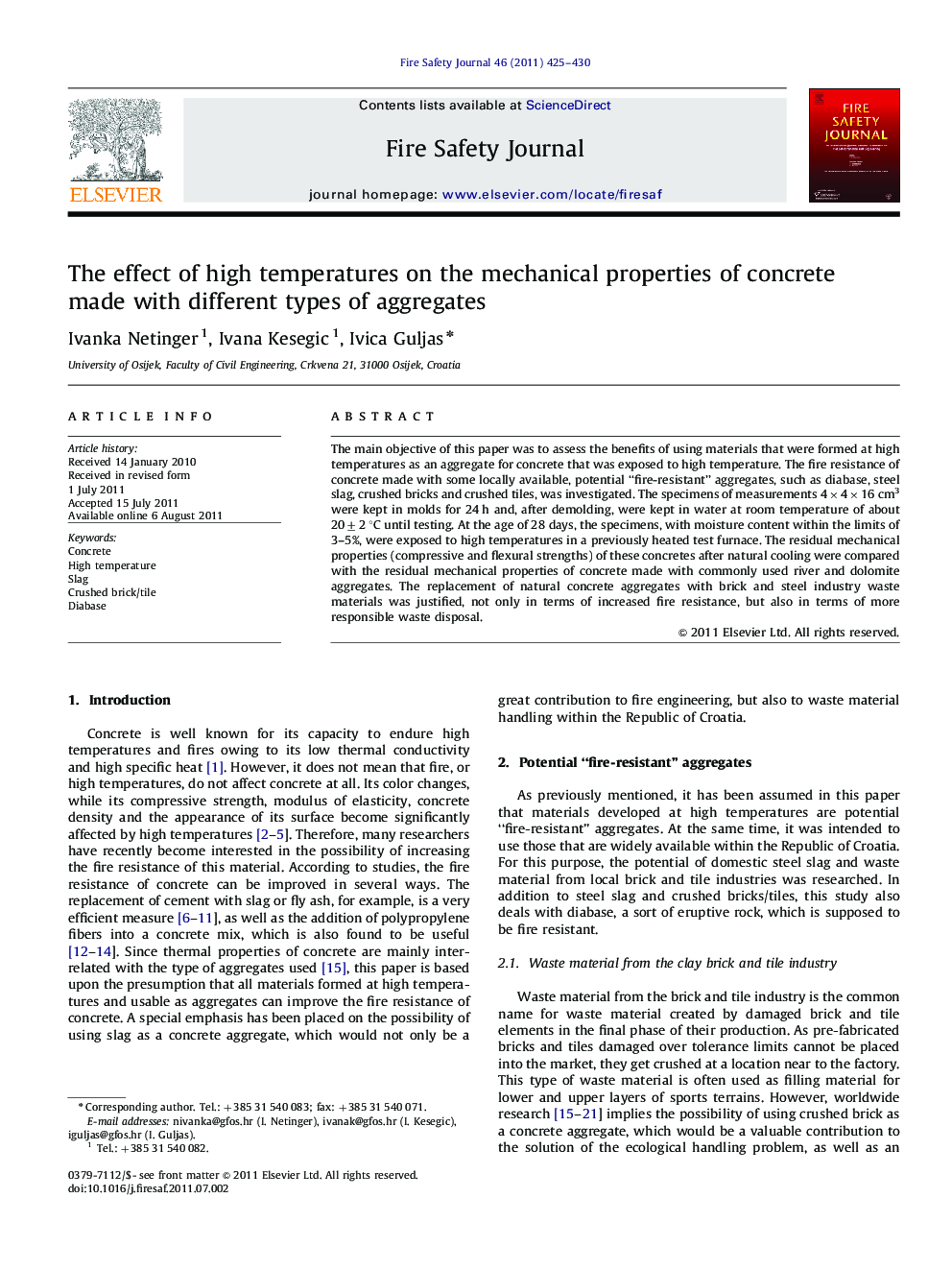| Article ID | Journal | Published Year | Pages | File Type |
|---|---|---|---|---|
| 270159 | Fire Safety Journal | 2011 | 6 Pages |
The main objective of this paper was to assess the benefits of using materials that were formed at high temperatures as an aggregate for concrete that was exposed to high temperature. The fire resistance of concrete made with some locally available, potential “fire-resistant” aggregates, such as diabase, steel slag, crushed bricks and crushed tiles, was investigated. The specimens of measurements 4×4×16 cm3 were kept in molds for 24 h and, after demolding, were kept in water at room temperature of about 20±2 °C until testing. At the age of 28 days, the specimens, with moisture content within the limits of 3–5%, were exposed to high temperatures in a previously heated test furnace. The residual mechanical properties (compressive and flexural strengths) of these concretes after natural cooling were compared with the residual mechanical properties of concrete made with commonly used river and dolomite aggregates. The replacement of natural concrete aggregates with brick and steel industry waste materials was justified, not only in terms of increased fire resistance, but also in terms of more responsible waste disposal.
► High-temperature materials produce concrete with increased fire resistance. ► The use of waste materials in concrete makes a contribution to waste management. ► Concrete made with brick industry waste shows satisfactory mechanical properties. ► Steel slag concrete shows much improved fire resistance at high-temperature ranges.
